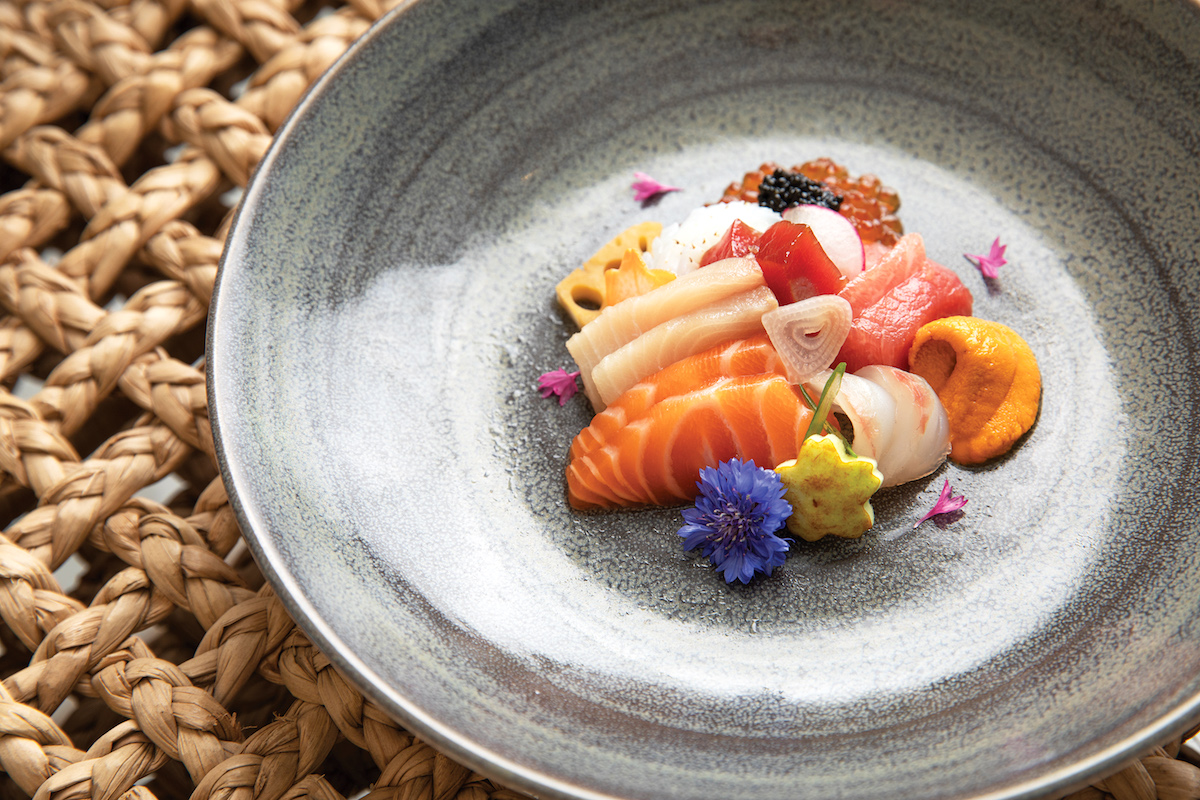
This post was originally published on this site
Sushi restaurants are at the height of popularity in town, as new spots and old showcase the culinary technique, artistry and tradition behind the beloved cuisine.
By Ashley Ryan
It’s clear that the sushi scene in Laguna Beach is on a roll: In the last eight months, at least four restaurants have opened (or reopened) in town. With a flurry of new dishes to try, the sushi options, already vast, have been enhanced even further, ensuring there is something for anyone who appreciates fresh seafood.
“There’s something exciting about the raw aspect of sushi, I think,” says George Fratkin, co-owner of Seabutter. “It’s unusual and exotic. Eating sushi always feels like a treat.”
It’s no secret that this popular cuisine got its start, and is still most prominent today, in Japan—or that, more than almost any other type of fare, it’s rooted in tradition. Whether it’s the ingredients sourced or the techniques used to cut or prepare the fish, chefs in America often turn to these classic customs when crafting sashimi, nigiri and rolls. More and more places have also begun experimenting with modernizing dishes, using unique sauces or toppings.
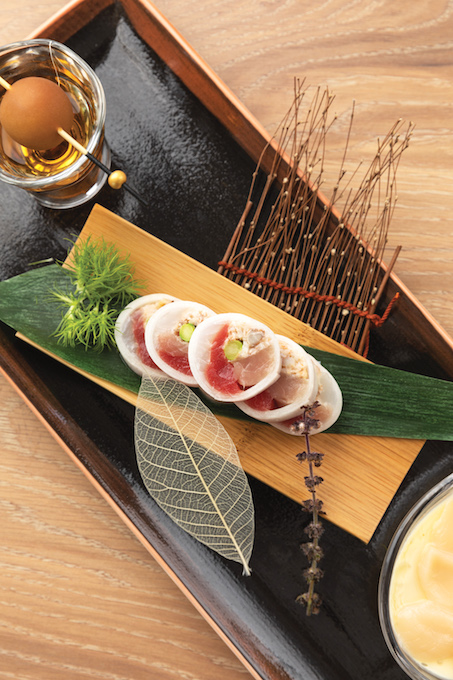
In addition to tradition, artistry plays a role in sushi-making as well. This is best demonstrated in plating, though it can also be seen in the beauty of the pieces as well as the way the fish is prepared.
One thing is for sure—whether it’s traditional or modern, sushi is a craze that almost everyone is craving right now. “Sushi is such a fascinating art and [it] appeals to people because, although you might have the same type of fish across different places, the way it tastes will vary … based on preparation,” says Pauline Nguyen, marketing specialist at San Shi Go. “Sushi dates back to centuries ago and has [been] revolutionized even to this day, … which makes it intriguing.”
Here, we offer a behind-the-scenes look at what goes into the sushi you’re enjoying around town.
Classic Meets Contemporary
Although not technically new, San Shi Go made its return in January to the delight of many locals. This sushi staple has been a part of the fabric of Laguna for more than 30 years, expertly blending classic with contemporary.
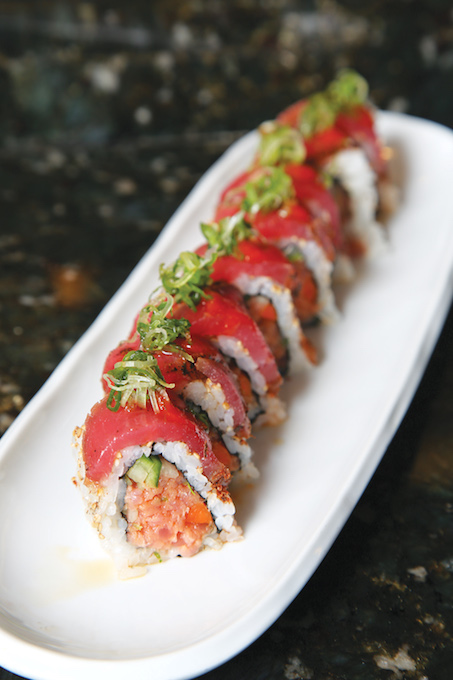
“Many of our techniques are still very traditional,” Nguyen says. “An example is our dashi broth. Dashi is used in … miso soup, udon, … [et cetera], and we simmer our broths … [with] kombu, bonito flakes and other ingredients to achieve the fullest umami flavor.” Umami is one of the five core tastes, often described as savory. “While it is easier to use an instant mix, processes like this make our dishes stand out,” she says.
Many of the broths, sauces and garnishes used at San Shi Go are prepared by hand, another traditional approach. Often undergoing long processes to get them just right, many of these elements are based on family recipes. “The preparation of sushi itself is considered an art form, from the amount of ingredients combined in the rice to the way the fish is cut,” she explains, adding that a sushi chef is just like an artist.
While the eatery keeps many of its preparation techniques traditional, it tends to incorporate more modern ingredients. “Our customers even give us unique ideas to use,” Nguyen notes. “We make sure that we always use quality ingredients and fish, and then make it more contemporary because we have a solid foundation and base to grow from.” Some things they add include microgreens, jalapenos, lemon slices and even sea salt.
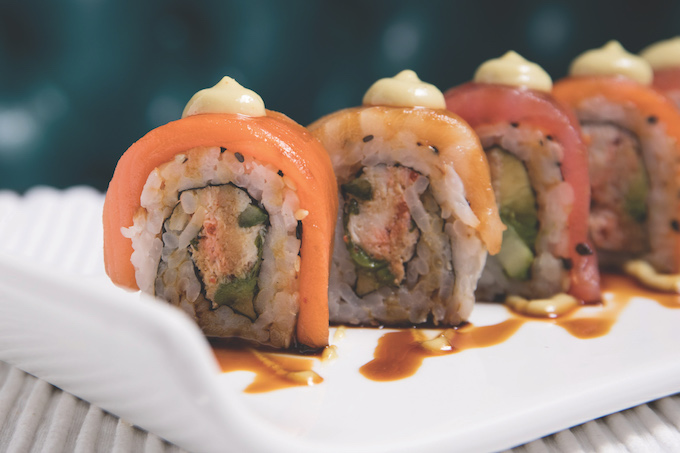
When Hotel Laguna reopened, with Craig Strong as executive chef, there was a flurry of excitement over the signature restaurants, Larsen and Fin. While Larsen initially received more attention, the clientele at Fin has grown since last fall. “Southern California cuisine has always embraced healthy fresh foods that take advantage of our coastal location,” Strong says. “Sushi and sashimi are unique. They allow you to discover that eating something raw can actually be a better experience than eating things fully cooked.”
At Fin, Strong says the preparation of the rice is important as is the soy sauce, which is brewed in-house. “That’s a key part of the flavor profile of our dishes,” he reveals.
When it comes to sushi, putting everything together definitely takes creativity, Strong notes. “Think of the bright color palette in combination with the precision of the cut of the fish. Perfectly cutting a piece of fish is deceptively difficult, like drawing a perfect circle by hand,” he explains.
Over at Starfish Laguna Beach, co-founder and managing partner Gretchen McConnell says eating sushi is a flavorful experience unlike any other. “Sushi is an art form in its attention to detail and precision, paralleled with infinite possibilities of creation—an ode to the culture of Japan,” she adds.
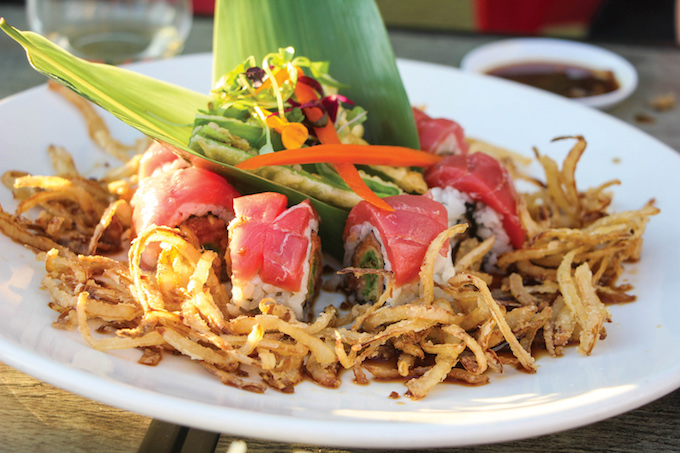
Like San Shi Go, Starfish combines classic techniques with modern ingredients. Special care is taken when making the sushi rice, with a house-made sweet vinegar mixed in to give all rolls and nigiri an umami flavor; the process also adds hints of citrus. The ingredients are mixed in a wooden hangiri bowl. “This allows the rice to stay moist while absorbing excess water, creating that perfect texture,” McConnell says. Starfish also creates oshizushi, or pressed sushi, using a traditional wooden hako (meaning “box”) press.
For seafood with a serious twist, you can’t miss Seabutter. Since opening last summer, the restaurant has worked to create one-of-a-kind flavors for sushi lovers in Laguna. “The goal for us is to create unique flavors that customers haven’t necessarily tasted in sushi they … have had before,” Fratkin says. “For example, if someone has tried yellowtail nigiri, they probably haven’t tried it minced and topped with black truffle, Kizami wasabi and black volcanic salt.” The Seabutter team also makes many toppings and sauces from scratch, even simple ingredients like spicy mayo.
While Fratkin says the sushi found at Seabutter isn’t exactly traditional, the work put in behind-the-scenes certainly is. “We do stick to traditional fish prep techniques, which is very important for preservation of freshness and quality,” he notes.
Perfect Plating
The artistry is evident not just in what tops the sushi and how it’s made, but how it is presented as well. “We select different plate types to help enhance the appearance of each dish,” Fratkin reveals. “Plating plays a big role in the customer’s experience. We love serving nigiri on flat slates, for example, to simulate the experience of serving each piece on an open palm.”
At Fin, Strong also views plating as a crucial piece of the puzzle. “Plate making is an art form of its own,” he says, noting that Fin uses dishes from a Japanese designer named Rene Ozorio, who has a line called Wabi Sabi. “These plates are the canvases and the food pops like art in a gallery.”
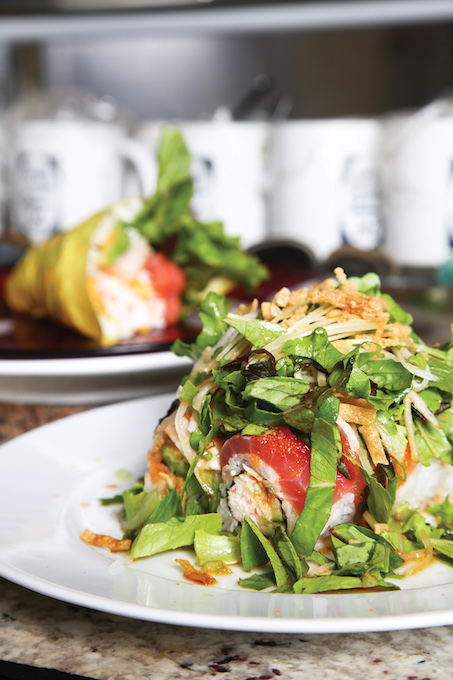
Creativity is a key component at Starfish, too, as McConnell says the linear shape of the rolls allows them to have “a stage presence” upon delivery to diners. “Most of our sushi is on the contemporary side, rooted in tradition, like the rest of our menu items,” she says, revealing that the team tries to have fun by incorporating unique sauces.
Meanwhile, at 242 Cafe Fusion Sushi, a north Laguna establishment where the name hints at its innovative approach, artistry takes center stage as well. Chef-owner Miki Izumisawa has long strived to make both the restaurant’s interior, plating and her sushi dishes reminiscent of a canvas, with Japanese influence infiltrating all three.
Deeply Rooted
As an eatery specializing in chef-curated experiences, Rebel Omakase finds its strength in tradition. In fact, omakase itself means a meal that is left up to the chef. “We have a lot of respect for contemporary sushi and things that are being done all over the world but, in terms of sushi, we want to stay on the traditional side,” says chef-owner Jordan Nakasone, who opened the eatery alongside his wife, Debrah Cha, in August.
“We don’t do spicy or creams or sauces or artificial ingredients,” Nakasone says. “Everything we serve here, we made.”
According to Nakasone, sushi is both simple and complex, though he says preparation of traditional dishes is a skill that must be honed. “Since there is a certain level of complexity in what we do, our team dedicates many hours for research,” he adds. “That’s where everything starts. Our source? Japanese chefs and restaurants. ”
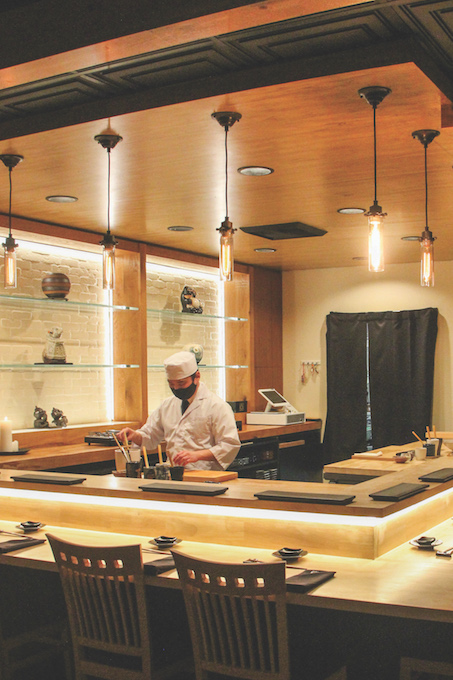
Edomae-style techniques inspired by Japanese chefs are used to cure and age the fish. The ingredients, too, are flown in directly from Japan. Nakasone says that the two most important parts of nigiri are the rice and the fish, so these are the items he focuses on importing. “Many ingredients come and go depending on weather conditions for fishing in Japan and the season,” he explains.
Another eatery in town that finds strength in tradition is O Fine Japanese Cuisine. They, too, import fish from Japan and offer omakase meals in addition to an a la carte menu. Garnished with traditional items like wasabi and grated ginger, the sashimi and nigiri at O Fine features layers of luxurious cuts over sticky rice for sushi that is fresh and flavorful, reminiscent of pieces you’ll find in Japan.
Oceanic Offerings
Whether you want an old or a new restaurant, traditional or contemporary sushi, the cuts of fish that you’ll find on menus across town will likely be the same. Yet the flavors come down to how it’s made, which explains why preparation is so vital to sushi chefs in Laguna.
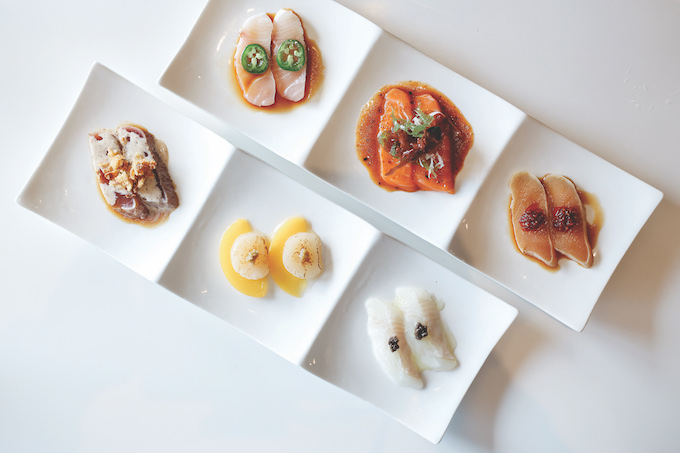
Some of the cuts you’ll find everywhere include bluefin tuna, yellowtail and salmon in addition to California rolls, all of which are on the menu at Fin. The eatery also offers wild scallops and black bream, which are popular. Often, the sushi is enhanced with luxury accompaniments such as caviar or truffles from France. While the menu is limited, the fish is high-quality and the views near Main Beach are unparalleled from the historic space. “It’s an incredible destination, and we’re all proud that it’s been embraced so warmly by the Laguna community,” Strong notes. “Panoramic views of the Pacific Ocean and pristine seafood is a perfect marriage.”
Over at San Shi Go, let the chef choose which pieces of sushi you’ll receive. Taking your likes and dislikes into consideration, this is a fun way to experience innovative flavors as well as quality cuts of fish. Nguyen says some other favorites include raw appetizers such as those with yellowtail and jalapeno, as well as spicy tuna on crispy rice.
The quality at Starfish is top-notch as well, with sushi plates incorporating sashimi-grade fish, jumbo lump crab and fresh lobster. Hako pressed sushi is one of the eatery’s most unique offerings, as is the Summer Hamachi roll, made of yellowtail sashimi and yuzu white truffle vinaigrette, and the Lobster Macadamia roll, which features mango, macadamia nuts and Sriracha aioli.
If you’re seeking more exotic tastes, try Seabutter’s mirugai clams, live scallops and even wagyu beef, which can be found in Wagyu-Uni, a dish that combines the cut with sea urchin. Fratkin says diners’ favorites, however, are typically the albacore tuna belly and the salmon truffle nigiri.
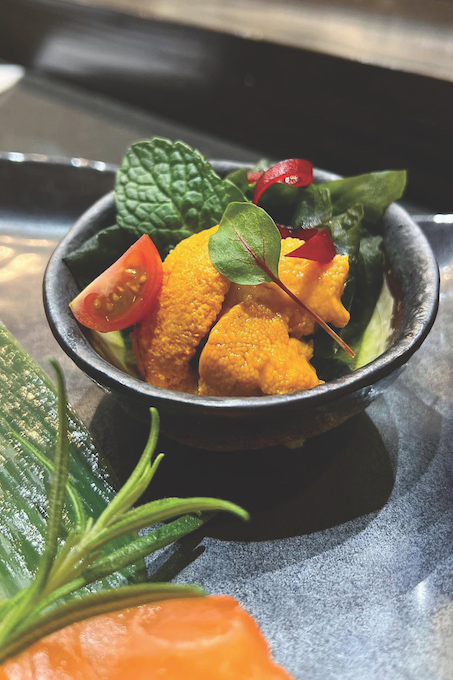
O Fine Japanese Cuisine also offers wagyu sushi, as well as options made with more rare ingredients like monkfish liver, barbecue eel, salmon skin and squid.
And, with more than 80 types of nigiri, the selection at 242 Cafe Fusion is unrivaled. From mango salmon roe, plum paste scallops and peppercorn eel to soy onion beef and curry white fish, you’ll find extremely artistic items on the menu. The Fusion Sashimi is unique, with the Sunshine Snow incorporating five types of fish, serrano pepper, chile, lemon and ice cream, and the Tomato Balloon featuring grape tomatoes, sweet basil and pine nuts alongside tuna and shrimp.
A couple of smaller, older restaurants in town—Hapi Sushi and Sushi Laguna—have also managed to evolve as they go. For well over two decades, Hapi Sushi has served customers on Beach Street, with favorites like spicy tuna and crunchy rolls as well as those featuring items like strawberries, mint leaves and spicy radish sauce.
At Sushi Laguna on Ocean Avenue, a number of “no rice” rolls grace the menu. In addition, there are vegan options with no fish; these veggie-centric rolls are filled with ingredients you may not see at other spots, including lettuce, asparagus, sprouts and gobo root.
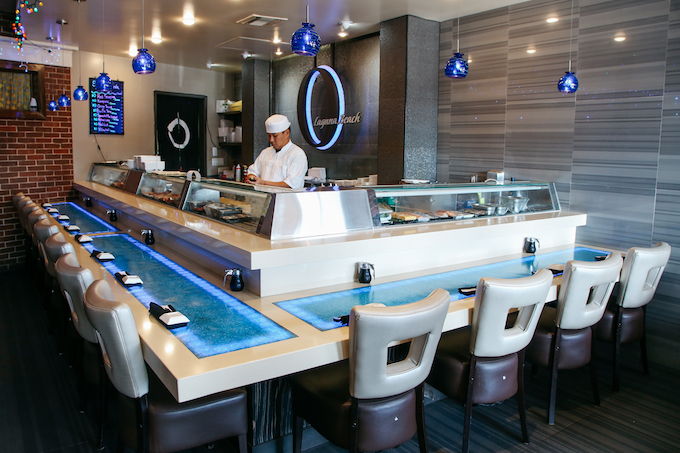
For traditional dishes, Nakasone at Rebel Omakase opts for things like shirako, or cod milt, as well as Japanese sea urchin and fatty bluefin tuna—“expensive, but exquisite [in] flavor,” he says. Sourcing fish seasonally from across the globe means the menu is ever-changing, so he focuses more on quality of the product than keeping the dishes the same.
No matter which sushi spot you opt for, there will be plenty of creativity and technique being polished in the background.
